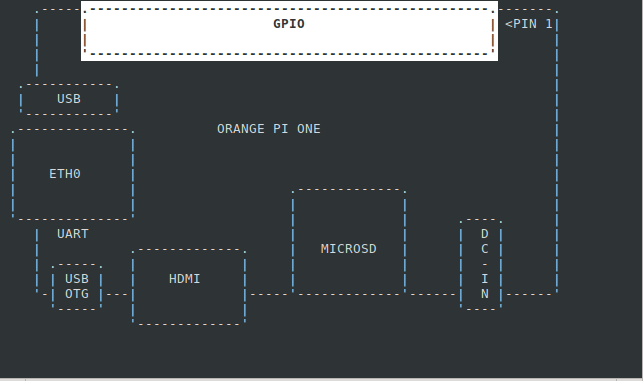-
Posts
35 -
Joined
-
Last visited
Recent Profile Visitors
2886 profile views
-
I can try to get the AP6212 drivers working tonight. I don't know if I can get the EMMC to work, since that seems rather tricky.
-
The only way to get it to boot in under 2 seconds is to use a toolchain like Yocto or Buildroot. I can boot my nanopi neo (same CPU) in about 3 seconds using buildroot. There is a steep learning curve, though.
-
Yeah, I2S is a whole other beast with the H3. I know support exists on mainline, but I'm not adept enough at the DTS stuff for enabling I2S sound cards. I have an oscope I can check the signals with, but the tedium isn't something I'm interested in right now. The built in analog codec would be a simple task, as it already is known working on friendlyarm's mainline kernel, and its a matter of using diff to get the goods. Please ask any questions, buildroot is really cool. I'm using it for a synth, guitar pedal, and a tiny pxeboot image server.
-
I haven't needed the onboard audio to work, but I'll bet your answer lies in the device tree overlay stuff in linux/arch/arm/boot/dts, where you may need to check the bindings in sunxi-h3-h5.dtsi and sun8i-h3-nanopi-neo.dts. You should create a patch that turns the status = "disabled"; line to status = "okay"; That might solve an issue with it enumerating correctly on boot. You may want to copy over an alsa config from a known working image, since that is might be an issue after the DTS stuff. The USB storage means you should probably install udev and support for FAT and NTFS storage under the USB drivers in the make linux-menuconfig
-
I'm familiar with the armbian-config tool and while I think its cool, it may not be the best thing for the beginner. The hardest part of beginning anything is not knowing what you don't know. I've begun writing a simple tool using curses and python which hopefully disambiguates some of the features of each board. I'm currently focusing on H3 boards, since thats what I have and I'm most familiar with them. Currently I have the ascii art and setup for the Orangepi PC, One, Zero, and Nanopi Neo. The idea is to use the arrow keys to navigate, spacebar to select, 'b' for back, and (most importantly) 'h' for help. The help menu should have enough information to get a beginner going. I'm currently working on the USB OTG section, and I'm trying to get all the configfs information on the internet into one place. Having the option to have any amount of USB OTG gadgets selected is really cool, and I'm not sure a lot people know about it. I'm hoping to make the configuration easy, like selecting radio buttons. If anyone thinks this is cool (or that it sucks), let me know. Its still in development. Here is a gif of it in action: You can find the (in-progress) repo here: https://github.com/MitchRatquest/armbian-helper
- 1 reply
-
3
-
.thumb.jpeg.01dfc33616b02c02ba4a70873c6df950.jpeg)
SmartGear multi-system emulator released as open-source
MitchD replied to Larry Bank's topic in Off-topic
Nice work! Do you have any videos of it in operation? -
change your /etc/network/interfaces file to look like: auto eth0 iface eth0 inet static address 192.168.100.1 netmask 255.255.255.0 and type sudo ifdown eth0 && ifup eth0 With that you should be able to ssh into the device using ssh USER@192.168.100.1
-
.thumb.jpeg.01dfc33616b02c02ba4a70873c6df950.jpeg)
Orange PI Zero + 4 USB-audio recording crackling
MitchD replied to Олег Яблонский's topic in Orange Pi Zero
This is very weird. I would not expect this behaviour. The only suggestions I can think of are: try the mainline linux version, try a real time kernel, or try some different usb audio recorders. Maybe a USB device with stereo mic in, so you'd only need 2 of them? I have used these before: https://www.ebay.com/itm/361502397040 and they work without any special drivers. I'm using alsa and the throughput is fine. The real problem here is that it should work. I'm sort of confused about it. I think the mainline kernel is your best option, followed by a realtime mainline kernel. I'm sorry I couldn't be of more help. -
.thumb.jpeg.01dfc33616b02c02ba4a70873c6df950.jpeg)
Orange PI Zero + 4 USB-audio recording crackling
MitchD replied to Олег Яблонский's topic in Orange Pi Zero
Interesting. Can you `cat /proc/interrupts` when recording with 3 cards vs 4? Which kernel are you using (output of `uname -a`)? Can your SD card write the files that quickly? -
.thumb.jpeg.01dfc33616b02c02ba4a70873c6df950.jpeg)
Has anybody a good latency after the RT-PREEMPT patch?
MitchD replied to MX_Master's topic in Allwinner sunxi
Great job! What CNC software are you running, and which CNC are you using? It looks nice and compact. Love that little PSU. -
.thumb.jpeg.01dfc33616b02c02ba4a70873c6df950.jpeg)
Has anybody a good latency after the RT-PREEMPT patch?
MitchD replied to MX_Master's topic in Allwinner sunxi
Hey @MX_Master, reporting in with some more numbers with the 4.13 RT stuff. # uname -a Linux nanopi-neo 4.13.11-rt3 #2 SMP PREEMPT RT Thu Nov 30 11:17:18 CST 2017 armv7l GNU/Linux # cyclictest -a -t -n -p80 # /dev/cpu_dma_latency set to 0us policy: fifo: loadavg: 0.11 0.10 0.03 1/94 920 T: 0 ( 915) P:80 I:1000 C: 238476 Min: 6 Act: 9 Avg: 9 Max: 38 T: 1 ( 916) P:80 I:1500 C: 158983 Min: 5 Act: 9 Avg: 9 Max: 27 T: 2 ( 917) P:80 I:2000 C: 119238 Min: 8 Act: 9 Avg: 8 Max: 17 T: 3 ( 918) P:80 I:2500 C: 95390 Min: 7 Act: 9 Avg: 9 Max: 16 -
If you are using the mainline kernel, you can use configfs for setting up USB HID. Try this example: modprobe libcomposite mount -t configfs none /sys/kernel/config cd /sys/kernel/config/usb_gadget mkdir g1 cd g1 mkdir configs/c.1 mkdir functions/hid.usb0 echo 1 > functions/hid.usb0/protocol echo 1 > functions/hid.usb0/subclass echo 8 > functions/hid.usb0/report_length cat my_report_desc > functions/hid.usb0/report_desc mkdir strings/0x409 mkdir configs/c.1/strings/0x409 echo 0xa4ac > idProduct echo 0x0525 > idVendor echo serial > strings/0x409/serialnumber echo manufacturer > strings/0x409/manufacturer echo HID Gadget > strings/0x409/product echo "Conf 1" > configs/c.1/strings/0x409/configuration echo 120 > configs/c.1/MaxPower ln -s functions/hid.usb0 configs/c.1 ls /sys/class/udc > UDC Which I got from my own working USB OTG ethernet + midi + file storage script and this example here. Note that they create a file called "my_report_desc" for HID specific stuff.
-
Need to see your smb.conf file to help you on this. Its most likely a permission problem, like allowing guests to see the samba share.
-
This isn't a feature with the H2/H3 device trees because those CPUs don't have a DPI interface. You could try to use notro's fbtft library using the parallel option to drive your display, but I don't think he has support for RGB24.







